2021 Nissan Note E-Power: how efficient is it in Singapore?



CarBuyer Team
13:00 March 26,2021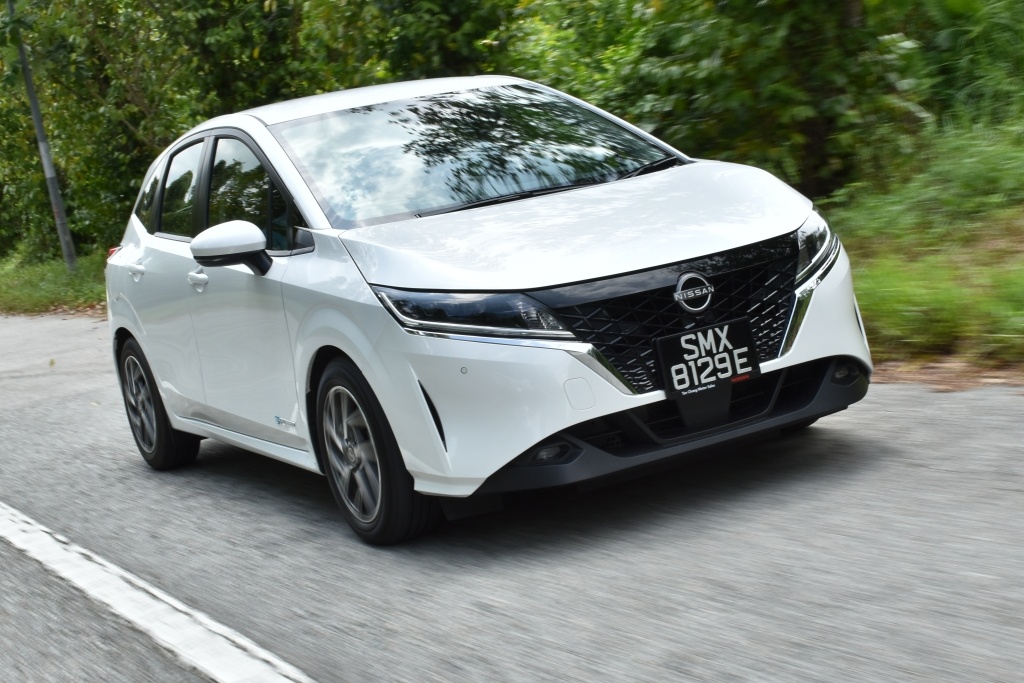


CarBuyer.com.sg spent three days and covered 500km in the new hybrid hatchback, the Nissan Note e-Power, in Singapore to see how efficient it really is. Here’s what you would really spend on petrol if you owned one...
SINGAPORE — We’re broadly familiar with Nissan’s e-Power hybrid drive system by now, but if not, here’s a quick refresher. Essentially, the system uses an electric motor to drive the car's wheels, very much like any electric vehicle (EV). However, the batteries are recharged not by plugging it in, but through a combustion engine that acts as an onboard generator.
The idea is to let users experience EV motoring without having to worry about finding a charging station. And because the car’s propulsion comes from the electric motor, you use a lot less fuel than you would with a regular internal combustion engine (ICE)-powered car.
The e-Power system has been in Singapore for a while now, first debuting on the Serena people carrier, and then subsequently on the compact Kicks crossover last year. And Singaporeans have clearly taken to the e-Power system like ducks to water, judging by the fact that those two models accounted for nearly half of all of Nissan’s new car sales in 2020, no doubt boosted by rebates that allow low emissions cars like them to retail with attractive price tags.
The latest model to receive the e-Power treatment here is the new Note, which Nissan claims to use a second-generation version of the system that promises better performance and improved efficiency.



But given that other manufacturers are releasing their own hybrid models at a rapid pace in Singapore, does the Note e-Power’s system still give it the edge? The CarBuyer Team took the car on an extensive three day test drive to see if it still appeals, or if you should look elsewhere.
Page 2: What did Ben note about the Note on the first day?
Day 1 - Senior Writer Ben Chia rips it while padding around in the Note



Being first to take the car meant I had to sit through the marketing spiel from Nigel, the ex-automotive journalist turned Nissan comms/marketing guy (Glad you survived that, Ben. - Ed.), who explained how the e-Power system in the Note is improved from the one in the Kicks and Serena.
Essentially, the e-Power setup in the Note features a new electric motor and inverter (the device that converts the battery’s DC power into AC power to drive the wheels). The motor has been tuned to produce 10 percent more torque than in the previous Note e-Power, while the inverter is now 40 percent smaller and 30 percent lighter than before.



All this translates to a car that should be fun to drive, in theory at least. After all, less weight and more torque means better acceleration, right?
My first impressions when pulling out of the Nissan showroom in Ubi was that the car felt quite… normal actually. Having previously driven the Kicks, I rather enjoyed that car's near-instantaneous torque and extremely linear power delivery that is a signature of most electric-powered cars. There are some of those characteristics in the Note as well, but over here it seemed a bit more well-controlled and less likely to feel like there's a rocket strapped to the back.



Nissan claims that the 1.2-litre engine-generator has also been rejigged to run at lower revs, and cut in to assist less often than before, with the idea being to maximise efficiency and reduce overall noise.
There’s even a clever system that optimises the best time to activate the engine’s charging capabilities, doing so when it detects noisier road conditions, thereby ensuring that you hear the engine less.



It's not very perceptible, which is perhaps the point. In contrast to the Kicks e-Power, you can hardly tell when the engine actually kicks in, short of looking at the display in the instrument panel. It works as intended I guess, but somehow it doesn’t feel quite as exciting as advertised.
By and large, I had very little complaints with the Note. From a driver’s perspective it actually does have some good qualities, and on windy bits of road such as Mount Faber and South Buona Vista Road, the car actually does rather well.



There’s a certain assuredness with the way the Note drives, which gives it a sense of maturity that belies its size. It feels like a much bigger car than it is, and I realise that’s a trait that the e-Power cars share. It does come as a pleasant surprise, especially for drivers who like that big car feel without necessarily driving a big car.
The other bits I liked were the features, some of which I found rather neat. The double screen dashboard setup is clearly Nissan’s way of mimicking Mercedes-Benz, although it obviously doesn’t have quite the same slick and premium execution. Then there’s the rearview mirror camera system that I first saw here in cars from Jaguar Land Rover. It’s still a nice thing to have even in a car this size, and I reckon it’ll make parallel parking a doddle.



My day with the car consisted of picking up Lionel from the office, going to lunch, and then getting the requisite photos for this story. I then spent the afternoon driving around the island to rack up the miles, before driving from home (in Woodlands) to Bedok for some exercise. In all, I covered slightly over 200km, and averaged 5.2L/100km - quite a bit more than the official quoted figure of 4.6L/100km from Nissan.
Then I handed the car off to Editor Lionel. I was curious to know - perhaps Dad-style driving could improve the efficiency?
Page 3: Does the Note get better the longer you drive it?
Go back to Page 2: Ben's experience behind the wheel
Day 2 - Editor Lionel Kong focuses on jotting down his behind-the-wheel experience



The Nissan Note, in its original petrol powered form, wasn’t high on the lists of aspirational cars for families because it really wasn’t designed to be one. It’s a small, basic car that got the job done reliably but with little in the way of extras to keep costs low. It was also small, and notably underpowered.
Yet here we are with the third-generation Nissan Note, which is only available here with an e-Power drivetrain. My first impressions of the car were muted, as it’s pretty basic inside. Yet it’s definitely not a badly-made car as the panel gaps are even and everything lines up properly.



Would you use this as a family commuter car? The drivetrain has plenty of promise. Electric charging stations are few and far between now, so the promise of a “self-charging” car, which is what many salespeople are marketing hybrids to potential customers as these days, shows plenty of promise. CarBuyer itself predicts 2021 is the Year of the Hybrid after all.
As any hybrid car owner will already know, the feeling of going so far between refueling stops never gets old. While Ben put in some enthusiastic driving, I put in plenty of highway mileage in a day as I darted between errands. That improved the fuel economy to 4.9L/100km, with about 120km of distance covered.



It’s actually a decently dynamic car through the corners, but the dashboard gives a big piece of real estate over to the mobile phone and entertainment interface, leaving the hybrid drive data to the smaller instrument cluster. It’s impossible to see all the important fuel economy statistics at the same time as you’ll need to scroll through the screens.



There’s Sport, Normal and Eco driving modes, but Eco and Normal modes felt identical in power delivery. The benefit of jabbing the button to Eco is that the Note’s one-pedal drive mode becomes active, and releasing the accelerator all the way delivers significant engine braking and causes the rear brake lights to turn on. Backing the pedal off up to a certain point also delivers more regeneration to the batteries while the car engages a proportional “engine brake”.
I found that it’s easier to drive it in Eco mode once you got the hang of it, whether on the highway or in city traffic. The added benefit is that you use the brakes less, which means significantly less wear and tear. This one-pedal mode is something that Nissan first debuted on the Leaf EV.



Still, it feels like a very basic family car for the rest of the vehicle’s occupants. Everyone gets a great view because of the large, upright windows, but despite the high-tech electric wizardry going on under the hood the car feels simple when compared to the current competition it is going up against. The six airbags and suite of active safety features including lane keeping assist really help sell the idea of it as a safe car, though.
Page 4: Noted ecomaniac Ju-Len puts the Note through its paces and his spreadsheet
Back to Page 3: Lionel's jottings on the Note
Day 3 - Managing editor Leow Ju-Len



I may be the oldest man in the office but I’m the most enthusiastic about hybrid technology. It isn’t new-fangled to me, since I was around to cover the birth of both the Honda Insight and Toyota Prius in the late 1990s. I even own a hybrid car myself (guess which one), and consider it a masterful piece of engineering.
If you’ve never driven a petrol-electric car, then consider one for your next set of wheels, especially if you’re looking for a car for all the important reasons - lots of safety equipment, low running costs, ease of use, practicality — the Note e-Power ticks all of those boxes. It’s not fancy by any measure, so don’t buy one to be fancy.
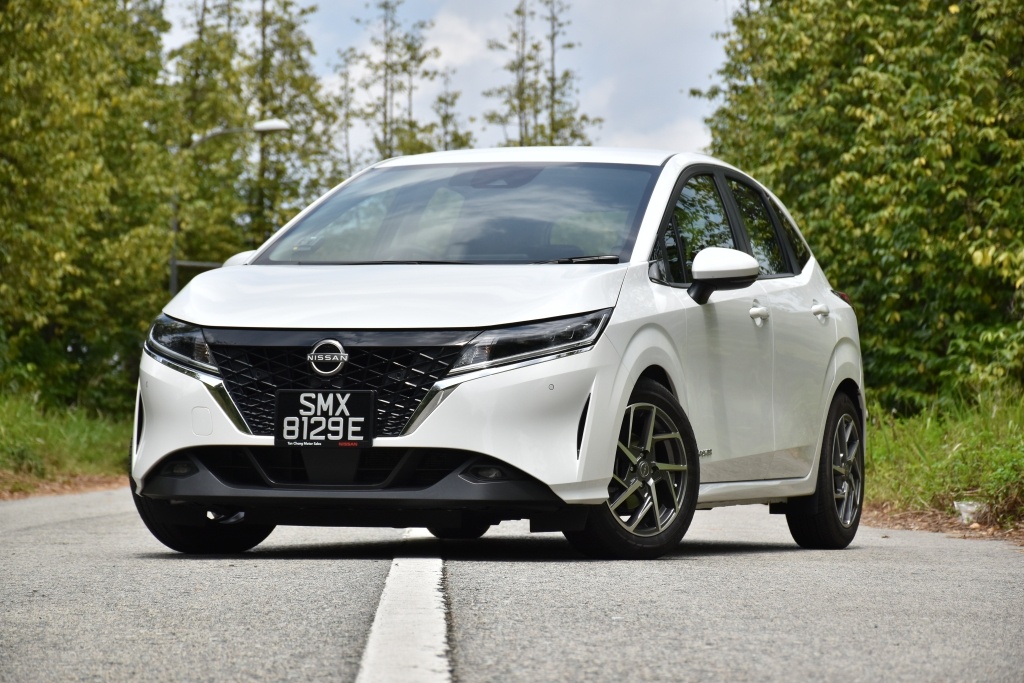


But it does come with a high feature count. Android Auto and Apple CarPlay, lane assist, autonomous emergency braking and a frigid air-con system are all present, and all worth having. The Premium version we drove has Nappa leather upholstery, and spending hours behind the wheel certainly wasn’t hardship.
340 litres is what you get in boot capacity (the rear seats fold to expand that to 670 litres), which beats such cars as the Suzuki Swift (updated with mild hybrid tech for this year) and Volkswagen Polo.



But the Note’s secret sauce is its e-Power drivetrain, which is supposed to offer a unique, EV-like driving experience and low fuel consumption.
Ben, whose attitude to fossil fuels seems roughly to mirror the attitude of those who think they should eat more shark’s fin while they still can, didn’t exactly cover himself in glory with his score of 5.2L/100km — that means he used 13 percent more fuel than he was supposed to, according to the car’s claimed average of 4.6L/100km.



I returned the Note to Nissan’s Nigel with 4.5L/100km on the trip computer. After covering 535.5km, we’d done better than the car’s claim, and the car itself was predicting a total range of 693.5km from its tiny 36-litre fuel tank.
Here’s a couple of takeaways from our drive. One, the technology does work, and if you’re a smooth driver who tries to slip through traffic with anticipation and forward planning, the Nissan will do its part and sip modestly from the tank. Two, by our rough calculations, the average driver here would fill up a Note e-Power twice a month and spend around S$60 each time.



Whether those sums work for you is entirely between you and your household’s financial controller. But the honest truth is that it seldom makes sense to buy a hybrid car purely for the fuel savings. Instead, there’s another reason to seriously consider the e-Power system that Nissan is betting so heavily on: like other hybrid systems, it makes for a better driving experience, especially in a city like Singapore. It’s quieter and smoother, and it has a way of making ordinary combustion power feel crude in comparison.
The pure electric future might be years and years away, but the Note feels like a bridge to that future. When you’re on it, there’s a good chance you’ll enjoy the experience.



Nissan Note e-Power Premium
| Electric Motor | 114hp/280Nm |
| Battery | Lithium ion, 1.54kWh |
| Engine | 1,198cc, inline three |
| Power/Torque | 80hp/103Nm |
| Gearbox | Single Speed Reduction Gear |
| System Power | 114hp (electric motor only) |
| System Torque | 280Nm (electric motor only) |
| 0-100km/h | 9.0 seconds |
| Top Speed | 150km/h |
| Fuel Efficiency | 4.6L/100km |
| VES Banding | A2 / -S$15,000 |
| Agent | Tan Chong Motor Sales |
| Price | S$104,800 with COE and VES |
| Availability | Now |
Bonus Notes: Why is the e-Power system better for efficiency?
Combustion to the power of e
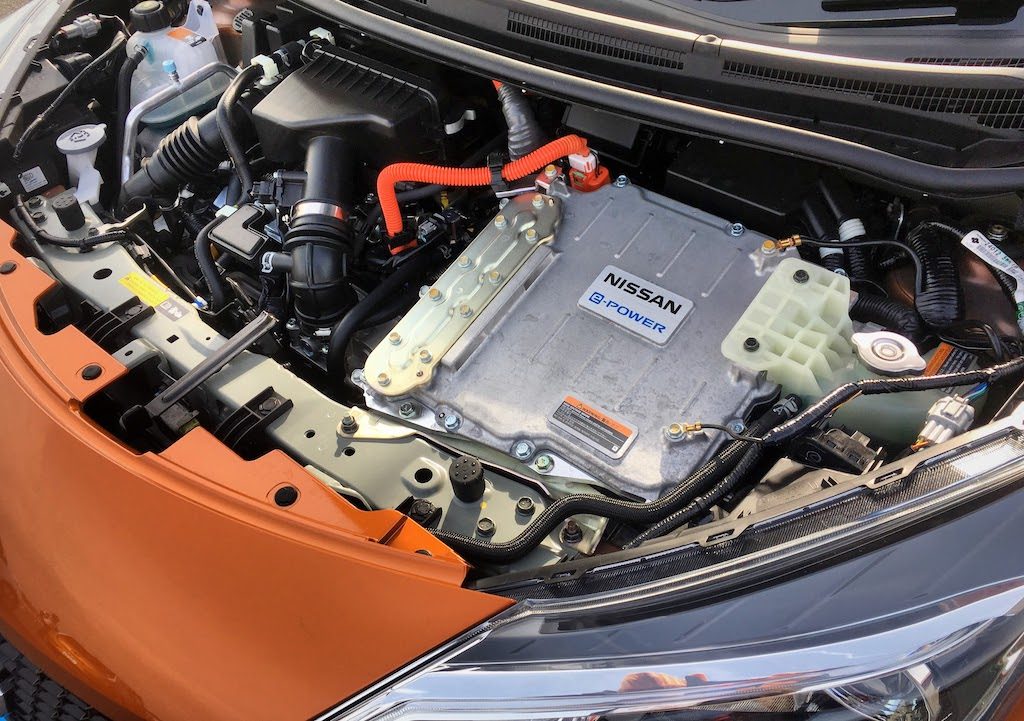


Why use a petrol engine to generate electricity to power a motor to drive a car? Because it turns out to be more efficient than getting the engine to turn the car’s wheels directly. Or, to be precise, it’s less inefficient.
In December 2016 we spoke to Naoki Nakada, the brains behind e-Power and the Nissan Leaf’s EV hardware, at Nissan’s Grandrive test track about the system. He pointed out that petrol engines are inefficient when revved up and down as a car speeds up and slows down. They really only work at their best at a constant speed, which is why your fuel consumption gets better on the highway.
Electric cars are way less wasteful at varying speeds. A motor’s efficiency generally doesn’t change much when it spins at different operating speeds, and in some ways it’s obviously superior: when your car is sitting at a red light an engine has to keep idling, but a motor doesn’t take up any energy. Plus, you can convert a car’s momentum into electricity and store it in a battery, but slowing down doesn’t magically put petrol in a combustion car’s tank.
With e-Power you can divide up the job of powering a car. Get the motor to drive the car while the petrol engine tops up a lithium-ion battery, and that way the fuel burner can mostly run at a constant speed that it’s optimised for.
Such linear hybrid setups aren’t all that new — locomotives and buses have used them for years — but Nissan put it into showrooms first, and to great success. The first Note e-Power never made it to Singapore, but in Japan it became the single best-selling car right after its launch.
“In Japanese driving conditions, this system is very useful,” Mr Nakada told us. Turns out it’s very useful in Singapore, too.


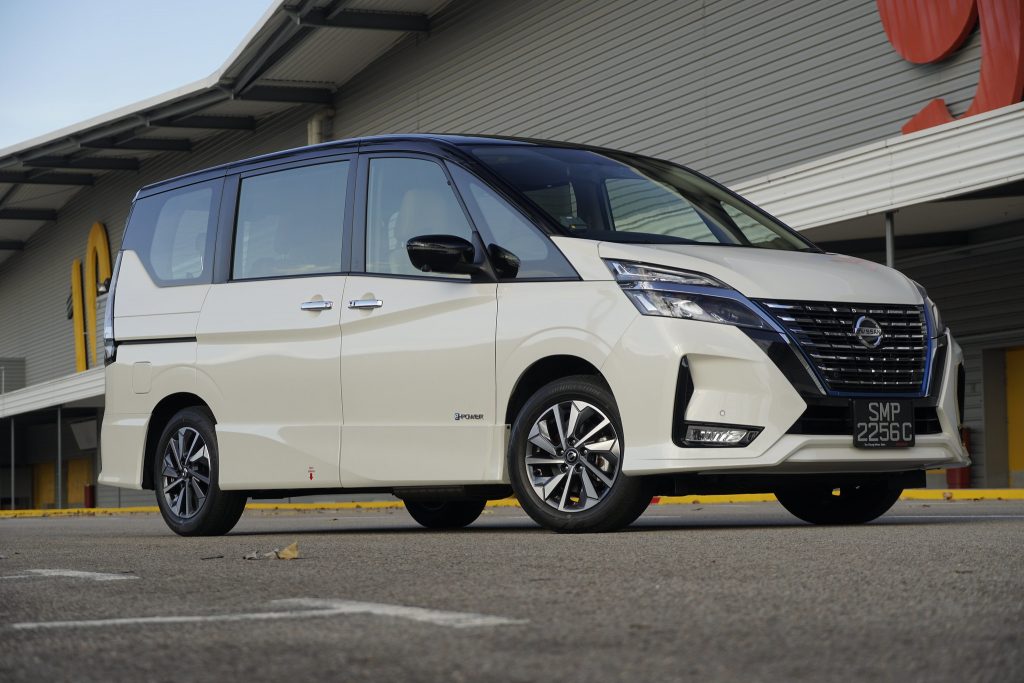
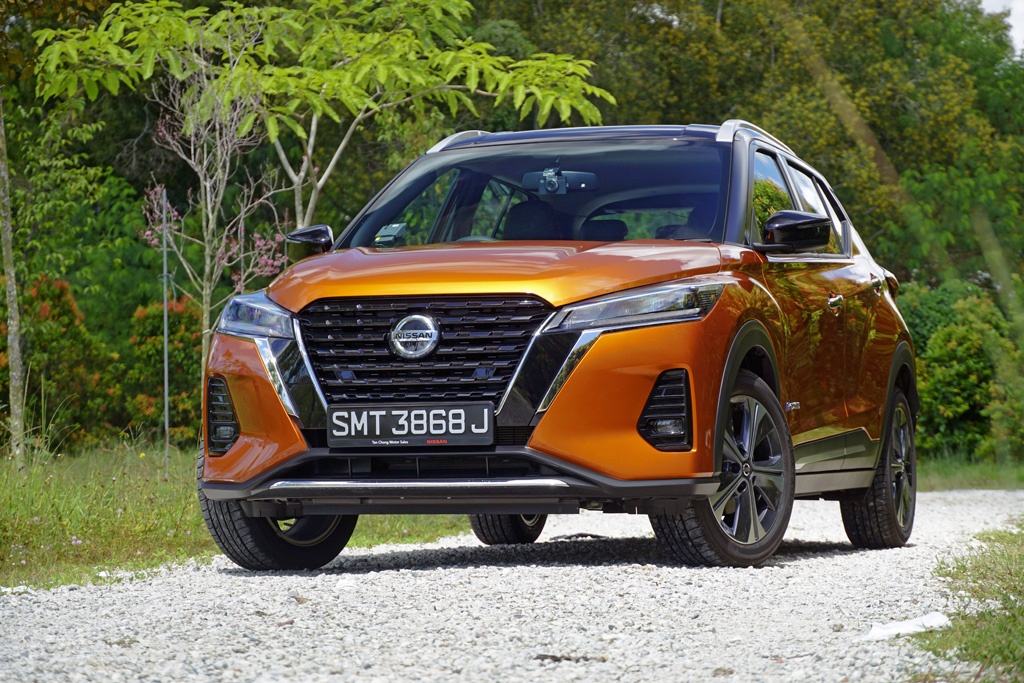

















Leave a Reply
Your email address will not be published. Required fields are marked *.